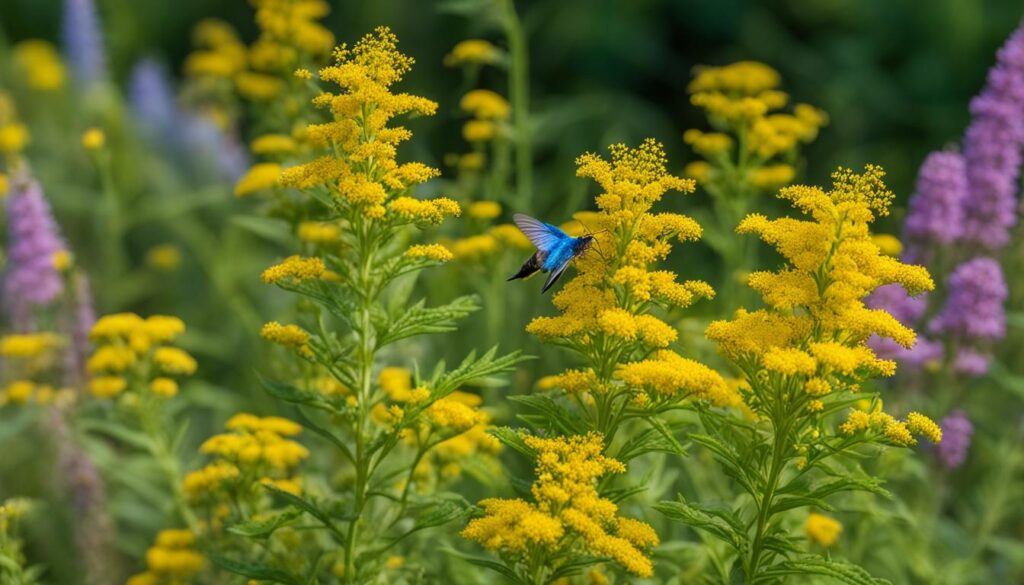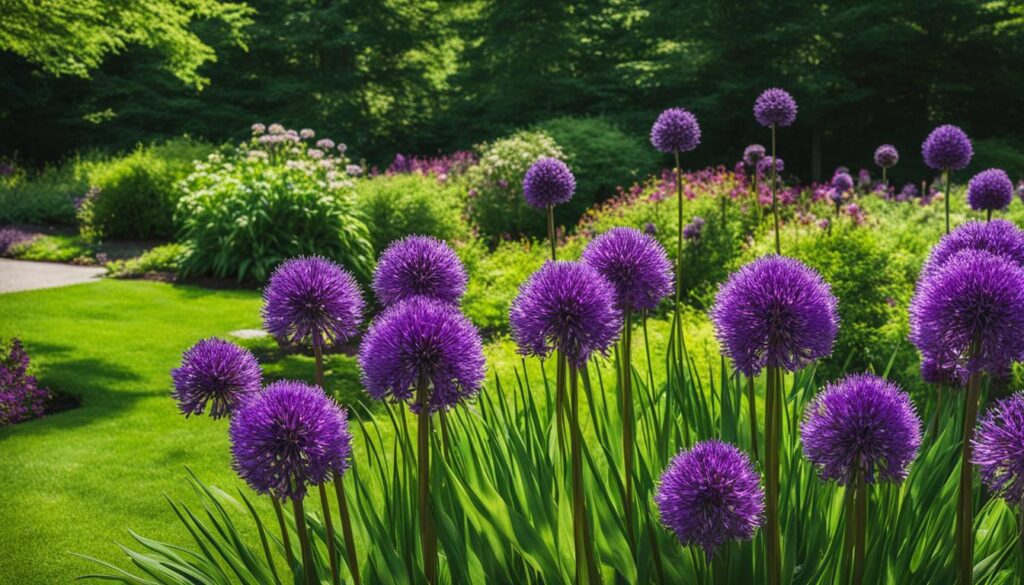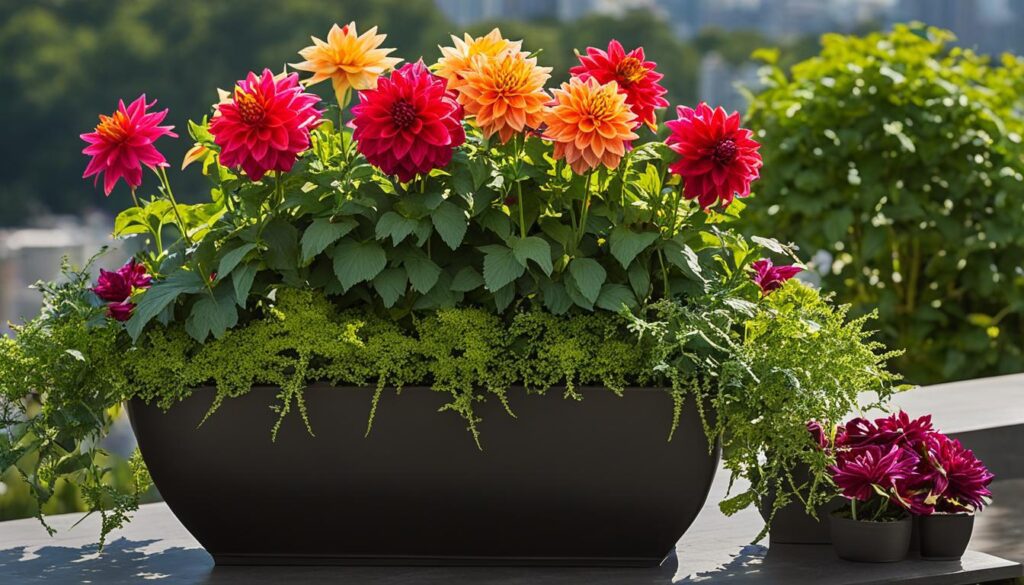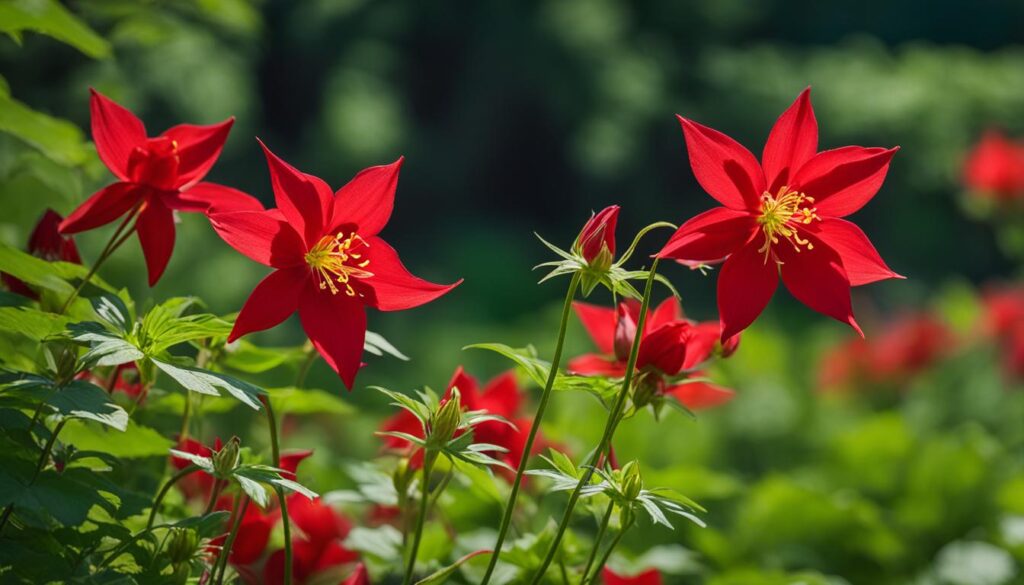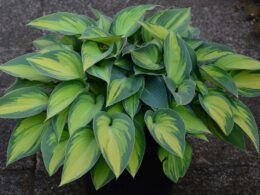Envision your outdoor space blooming with the colors of spring and humming to the tune of pollinators: this is the joy of Connecticut gardening. Your garden is not just a plot of earth; it is a canvas where you paint with the living blooms of nature. The art of crafting vibrant gardens begins with selecting the right flowers—a seamless blend of beauty, adaptability, and resilience.
In the heart of the Northeast, gardening in Connecticut invites a diverse palette of flora that naturally complements the local climate and soil. Step into the world of horticulture and transform your garden into a spectacle of hues and fragrances that epitomize the beauty of your home state. This guide is your key to enhancing your outdoor space and nurturing a garden that captures the essence of New England’s distinct seasons.
Embracing Connecticut’s Native Beauty: Trumpet Honeysuckle
When you’re considering embellishing your personal oasis, the allure of native plants can’t be ignored. Trumpet Honeysuckle, a gem of Connecticut’s flora, stands out as a quintessential addition to your hummingbird garden. Picture the vibrant orange-red flowers drawing the eye and the heart to every corner of your verdant retreat.
Not only do these tubular blooms create a visual symphony of color, but they also play a pivotal role in preserving our local ecosystem as a replacement for invasive species. By introducing Trumpet Honeysuckle into your green space, you are deploying a living fortress against invasions by the less desirable Japanese honeysuckle and other every enthusiastic non-natives.
Hummingbird Magnet with Vibrant Flowers
Imagine a hummingbird garden animated with the flitting of wings and the song of birds, all thanks to the Trumpet Honeysuckle. This native plant is irresistible to these jeweled aviators, ensuring that your garden will buzz with life and contribute to the well-being of local wildlife. Its tubular blossoms are like nature’s perfectly designed hummingbird feeders, offering nectar and shelter.
Invasive Species Replacement
With the climate and habitats changing, the concern for invasive species is increasing. Choosing Trumpet Honeysuckle for your garden not only rewards you with an aesthetic feast but also supports ecological balance. Its spirited growth and adaptability make it a pragmatic choice for gardeners mindful of and committed to the preservation of Connecticut’s diverse biological tapestry.
The Allure of Connecticut’s Goldenrods: Blue-Stemmed Varieties
When you’re seeking to brighten your garden with native flowers that offer a host of benefits, the Blue-Stemmed Goldenrod emerges as a remarkable choice. Its rich, golden blooms not only catch the eye but also capture the hearts of various pollinators, making it an essential component of any pollinators garden. Adapted to thrive in the New England climate, it has rightly earned its place as a Connecticut native plant.
With over 25 native varieties of Blue-Stemmed Goldenrod, your garden’s design can exhibit a tapestry of hues and forms. This plant’s adaptability allows it to fit seamlessly into different garden aesthetics, from the casual wildflower garden to the structured perennial bed.
- Serves as a vital food source for local pollinators, supporting the ecological network of your backyard habitat
- Debunks the common misconception that goldenrods are responsible for hay fever — an unfortunate myth that has long clouded the reputation of this valuable plant
- Acts as a late-season life-giver, offering nectar when many other plants have ceased to bloom
If you’re looking to create a sanctuary for winged visitors while also choosing blue-stemmed native flowers, then carving out space for Blue-Stemmed Goldenrod in your garden is a decision you’ll watch pay off beautifully season after season.
Best Flowers To Plant In Connecticut: Allium’s Colorful Appeal
As a passionate Connecticut gardener, your aspirations for cultivating an enchanting garden that buzzes with activity can find fulfillment with Allium. Celebrated for their architectural beauty, these summer blooming bulbs unfurl into stunning globes of vibrant hues, beckoning butterflies and hummingbirds to your personal haven. Their ease of care and dramatic presence make them core candidates for butterfly gardens, creating a captivating display of fluttering wings against a backdrop of lush foliage and soaring stalks.
Summer Blooming with Butterfly and Hummingbird Attraction
Envision your garden as a sanctuary where the kinetic dance of butterflies and the gentle hover of hummingbirds are daily occurrences. By incorporating Alliums, your summer landscape will be a canvas of motion and color, positioned to provide nourishment and respite for these enchanting pollinators. The allure of their spherical flower heads does more than embellish your garden; it also constructs ecological bridges that support biodiversity in your very own yard.
Low Maintenance with a Sea of Color
One of the most appealing aspects of growing Alliums is their low maintenance nature, allowing you to revel in the joy of gardening without the burden of incessant upkeep. Their long-lasting blooms emerge atop statuesque stalks, painting your garden with a sea of purples, blues, pinks, and whites, and with minimal effort on your part, these perennial wonders will return, growing more prolific with each passing year.
- Effortless to integrate into existing landscapes and garden designs
- Resilient against common garden pests, providing worry-free gardening
- Exceptionally drought-tolerant once established, reducing your watering duties
Your involvement with Alliums starts by planting their bulbs once the threat of frost has subsided, setting the stage for a mid to late summer spectacle that is as durable as it is dazzling. If you haven’t yet included these illustrious bulbs in your garden tableau, perhaps this is the year to do so, and witness the transformation they can provoke.
Petunias: The Heat-Tolerant Pioneers of Connecticut Gardens
As you delve into the world of low maintenance gardening, you’ll be delighted by the charm and resilience of petunias. These vibrant annual flowers are renowned for their ability to withstand the sweltering heat of Connecticut summers, ensuring your garden stages a stunning display when many other plants shy away from the sun’s intensity.
Heat-tolerant plants like petunias not only offer a beautiful array of color options but are also undemanding, making them a top choice for gardeners at every experience level. Whether bathed in full sunlight or tucked away in partial shade, petunias adapt with grace, enabling you to curate a garden that is as versatile as it is enchanting.
- The sun-loving nature of petunias makes them ideal for sunny spots where other plants might languish.
- For those new to gardening, the forgiving disposition of these flowers provides a perfect starting point in low maintenance gardening.
- With their extended blooming period, petunias ensure that your garden is awash with color from spring to fall.
Celebrate the season’s warmth knowing your garden is equipped with the resilient charm of petunias, which seamlessly blend aesthetic appeal with practicality. Whether you’re creating border rows, hanging baskets, or accentuating your patio with vibrant color, petunias have proven to be a reliable and gorgeous staple in the Connecticut gardening community.
Dahlia: A Low-Water Beauty for Container Gardening
As you explore the diverse range of Connecticut garden varieties, the Dahlia emerges as a standout for its visual drama and ease of care. Ideal for container gardening, this low-water plant adds a flair of sophistication to patios, balconies, and any outdoor area seeking a splash of color. Dahlias offer a sustainable option for gardeners conscious of water usage, requiring minimal irrigation to maintain their stunning appearance.
Dazzling spectators with their geometric blooms and spectrum of colors, dahlias are the jewels of the horticultural world. With their unique shapes and multicolored petals, these flowers make a striking addition to your Connecticut garden, creating a bold statement in your landscape design.
Unique Shapes and Multicolored Petals
The artistic petals of the Dahlia, ranging from spiraled cactus forms to the waterlily-like delicacy, render each flower a botanical work of art. Whether you’re drawn to the soft pastel tones or the vibrant pops of color, Dahlias provide a breadth of options to personalize your container garden. They are particularly celebrated for their intricate petal arrangements, adding a sophisticated touch to your garden tableau.
Effortless Care with Striking Visual Impact
For those seeking maximum impact with minimal effort, the Dahlia obliges. These low-water plants are well-suited to the Connecticut climate, particularly when their thirst can be quenched by rainfall. With an uncomplicated requirement for well-draining soil and a little care when placing in direct sunlight, Dahlias will reward you with vibrant blooms from midsummer until the first hard frost.
- Ideal for beginner gardeners due to their easy-going nature.
- Works exceptionally well in container gardening settings, offering flexibility and movability.
- Thrive with minimal watering, making them a prime choice for eco-conscious plant lovers.
Embolden your outdoor space with the dramatic florals of the Dahlia. Not only are they a wise choice for sustainable gardening practices, but they also deliver a seasonal spectacle that is truly unmatched. This year, transform your spaces with the enchanting allure of Dahlias and watch as they elevate your Connecticut garden to a whole new level of grandeur.
Adding Splashes of Color with Eastern Red Columbine
As the Connecticut spring awakens, Eastern Red Columbine begins to infuse your garden with vibrant hues, making it a prime choice for those eager to introduce spring blooms to their outdoor retreat. This native perennial is renowned for its unique, nodding petals that dance in the breeze, offering a visual feast of vibrant garden flowers that signal the arrival of warmer days.
Beyond its aesthetic appeal, Eastern Red Columbine is a beacon for local wildlife. Watch as your garden becomes a hub of activity, drawing in an array of birds and butterflies – especially finches, that find this flower irresistible. The presence of such creatures not only adds an element of liveliness to your garden oasis but also contributes to the ecological health of your local environment.
- Brings an early display of color with blooms that brighten the garden.
- Appeals to a wide variety of pollinators, enhancing the garden’s biodiversity.
- Thrives in the Connecticut climate, marrying natural beauty with regional suitability.
Whether you’re beginning a new garden project or enhancing an existing one, choosing Eastern Red Columbine is a decision that yields delightful results. Its resilience, coupled with its minimal care requirements, makes it an ideal selection for gardeners of all skill levels. Experience the joy of spring with each blossom of Eastern Red Columbine adorning your outdoor space.
Late Season Splendor: The New England Aster
As the vibrant colors of summer begin to wane, the New England Aster steps forward, ensuring your garden’s splendor continues unabated. Celebrated for its deep purple petals, this perennial native illuminates the Connecticut landscape with autumn blooms that are both a spectacle and a lifeline for local wildlife. Embrace the beauty and ecological benefits of one of the most beloved native Connecticut flowers.
While many gardens quiet down as the cooler months approach, the New England Aster is just getting started. Its rich purple and pink flowers become a haven for pollinators searching for nourishment before winter sets in. This period of late-season blooming is not only essential for your garden’s aesthetics but also for the sustenance of local ecosystems fostering wildlife-friendly gardening.
Purple Petal Perfection for Autumn Gardens
Your patience through the growing season is richly rewarded as clusters of star-shaped blooms explode in a display of purple petal perfection. The New England Aster’s profuse flowers are a visual reminder of Connecticut’s natural heritage, bringing an authentic piece of New England’s autumn color palette to your personal outdoor sanctuary.
Nurturing Wildlife With Native Flora
Integrating New England Aster into your garden serves a dual purpose. Not only do you enhance your landscape with riveting colors, but you also provide vital resources for pollinators. Bees, butterflies, and other beneficial insects depend on these native blooms for their late-season cycles, making your garden not just a place of beauty but a hub of biodiversity and environmental stewardship.
- Revel in the beauty of autumn blooms when most other plants retire for the year.
- Invite a symphony of wildlife into your garden, enriching your connection to the natural world.
- Invest in native Connecticut flowers that require less maintenance and are adapted to the local climate.
Perennial Charm with Pearly Everlasting
Imagine a perennial presence in your garden that not only stands the test of time but also endures the challenging periods of drought. Pearly Everlasting offers just that, becoming a staple among perennial flowers for its tenacious yet delightful blooms. Its relationship with sunflowers brings a familiar charm while introducing a unique finesse to your Connecticut garden.
Year after year, Pearly Everlasting greets you with clusters of white and yellow flowers, reemerging with a reliable and heartwarming display. Recognized for their drought-resistant nature, these plants are a testament to resilience, requiring minimal water and returning each season to adorn your landscape with their perennial beauty.
- A favorite among drought-resistant plants, Pearly Everlasting conserves water and flourishes even when rainfall is scarce.
- Their elegant white blossoms with yellow centers provide a continuous visual treat from midsummer to fall, contributing to the biodiversity and visual appeal of your garden.
- As perennials, they’re a cost-effective option, diminishing the need for annual replanting and offering a sustainable gardening solution.
With Pearly Everlasting, your garden becomes a symbol of enduring splendor. These sun-loving perennials not only enhance the aesthetics of your space but also serve as a beacon of sustainability, proving that beauty and practicality can indeed coexist in harmony.
Choosing Heat and Cold Resistant Marigolds
If you’re searching for a vibrant addition to your pollinator-friendly garden, the selection of heat-resistant flowers such as marigolds will captivate your senses and create a sanctuary for diverse wildlife. These robust beauties stand resilient against Connecticut’s fluctuating temperatures, weaving together both aesthetics and functionality in your garden’s tapestry.
Six to Eight Months of Blooming Brilliance
Marigolds are cherished not only for their eye-catching hues but also for their long blooming periods, lavishing your garden with colors that endure from the break of spring until the whispers of fall. Marvel as they offer up to eight months of tireless bloom, providing an ever-present vibrancy to your outdoor spaces.
Attracting a Diverse Array of Pollinators
While marigolds bring longevity and resilience to the forefront of their charm, they also play a pivotal role in sustaining a pollinator-friendly garden. Their intense colors and irresistible allure draw in a spectrum of pollinators, ensuring that your garden serves as an important refuge within the ecosystem.
- Blossoms act as a magnet for beneficial insects, such as bees and butterflies, contributing to a thriving garden life.
- Marigolds’ ability to withstand varied temperatures makes them a steadfast partner through the relentless heat of summer and the unpredictable chills of fall.
- Their adaptability includes not just climate resilience but also the ease with which they integrate into diverse garden designs and settings.
With the selection of marigolds in your garden, you elevate your space to more than just a feast for the eyes; you create a living, breathing ecosystem supportive of Connecticut’s precious pollinator populations. So, plant marigolds and witness your garden transform into a hub of life and beauty that stands robust, come rain or shine.
Conclusion
Your journey through the diverse landscape of Connecticut’s flora is nearing its beautiful culmination. You’ve discovered an abundance of native and adaptable species that promise to enrich your garden with a symphony of colors and textures. From the whimsical trumpet of the Honeysuckle to the vibrant sunbursts of Marigolds, your options for Connecticut landscape enhancement are plentiful and promising.
Finding the Perfect Flourish for Your Connecticut Landscape
As you reflect on your options, consider the distinctive qualities that each plant brings to your garden tableau. Whether you aim for the longevity and drought resistance of Pearly Everlasting or the pollinator-friendly allure of Blue-Stemmed Goldenrod, the right selections will ensure your garden is not just a showcase of natural beauty, but also a haven for local wildlife. With this comprehensive guide illuminated by the expertise of the Old Farmer’s Almanac and UCONN’s Home & Garden Education Center, your seasonal planting guide is now at your fingertips, leading you towards gardening success.
Incorporating Seasonal Planting Strategies for Long-Term Success
Remember, the key to a flourishing garden lies in understanding and leveraging the frost-free growing season. Timing your plantings to harmonize with Connecticut’s distinct climate – within the parameters set by the USDA plant hardiness zone map – will maximize the potential of each bloom. Whether you’re nestled in the 6b zone of Weston or within the mild climes of Westport’s 7a, your attentiveness to the right planting strategies ensures a landscape that thrives. Embrace this expertly curated selection, and watch as your dedicated efforts yield a vibrant, thriving garden that becomes the envy of your Connecticut community.
Are the Top Flowers for Delaware Gardens also Suitable for Connecticut Gardens?
When considering vibrant flowers in Delaware for your garden, take into account the weather and soil conditions. While some flowers may thrive in both Delaware and Connecticut, it’s best to consult with a local florist or gardening expert to ensure you choose the most suitable options for your specific region.
Source Links
- https://www.landscaperlocator.com/20-of-the-best-flowers-to-plant-if-you-live-in-connecticut/
- https://tjlandscapemasonry.com/blog/best-time-to-plant-in-connecticut
- https://www.ctpublic.org/show/connecticut-garden-journal/2023-02-02/connecticut-garden-journal-top-5-picks-for-new-flowers-to-get-excited-about






